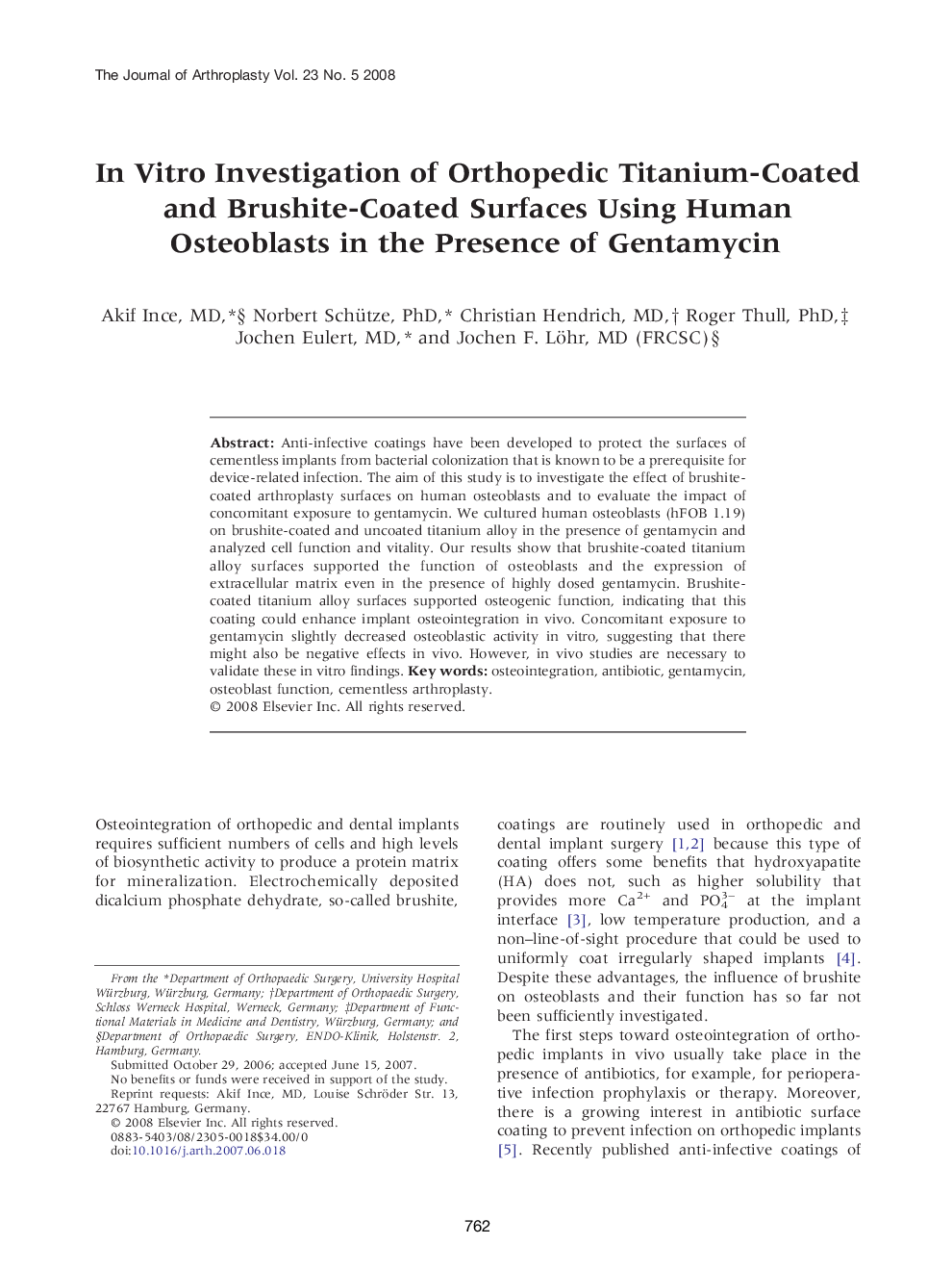| Article ID | Journal | Published Year | Pages | File Type |
|---|---|---|---|---|
| 4063670 | The Journal of Arthroplasty | 2008 | 10 Pages |
Anti-infective coatings have been developed to protect the surfaces of cementless implants from bacterial colonization that is known to be a prerequisite for device-related infection. The aim of this study is to investigate the effect of brushite-coated arthroplasty surfaces on human osteoblasts and to evaluate the impact of concomitant exposure to gentamycin. We cultured human osteoblasts (hFOB 1.19) on brushite-coated and uncoated titanium alloy in the presence of gentamycin and analyzed cell function and vitality. Our results show that brushite-coated titanium alloy surfaces supported the function of osteoblasts and the expression of extracellular matrix even in the presence of highly dosed gentamycin. Brushite-coated titanium alloy surfaces supported osteogenic function, indicating that this coating could enhance implant osteointegration in vivo. Concomitant exposure to gentamycin slightly decreased osteoblastic activity in vitro, suggesting that there might also be negative effects in vivo. However, in vivo studies are necessary to validate these in vitro findings.
